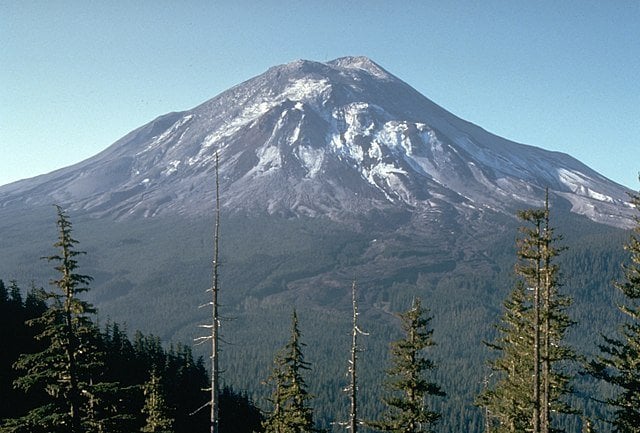Mount St. Helens is considered a dangerous volcano in the United States, but it’s also out of line with other volcanoes. Its location in Skamania County, Washington is what has confused scientists for a long time. This location is rather strange, as it isn’t where the magma usually rises to the Earth’s surface, and yet, Mount St. Helens considered to be quite a dangerous volcano.
Out of line with other volcanoes
Scientists believe they have an answer to this mystery, and they published their findings in the journal Nature Geoscience. Scientists Paul Bedrosian and Jared Peacock, members of a team led by the U.S. Geological Survey, discovered that the odd location of the dangerous volcano can be explained by the huge rock formation located beneath it. The rock formation changes the flow of the magma as it rises through the Earth’s crust.
Mount St. Helens forms part of a line of volcanoes known as the Cascade Arc. The volcanoes start in British Columbia in Canada and extend toward northern California. They’re formed by the convergence of two tectonic plates, which are large portions of the Earth’s crust.
The Juan de Fuca plate is pressing under the North American plate, which results in magma being squeezed upward. A large amount of that magma gets underneath the Cascade Arc. Long ago, this same process resulted in volcanoes being formed.
Geophysical imaging technique
The team used a geophysical imaging technique to make a 3D image of the Earth’s crust under southwestern Washington. Doing that allowed them to discover a large geological formation called the Spirit Lake batholiths, which affect the magma rising toward the west in the vicinity of Mount St. Helens. That’s what caused this dangerous volcano in the Cascade Arc to be out of line with other volcanoes.
“Either method by itself can lead to a level of uncertainty, but when you layer them together as we have done in this project you get a much clearer picture of what lies below,” said Adam Schultz, an Oregon State University geophysicist who is principal investigator on the NSF grant to OSU and co-author on the paper, in a statement.
This discovery and study are helping scientists understand the reason this dangerous volcano is so explosive and is the most active volcano in the Cascade Arc.
“This new data suggests that deep magmas exist over a broad area in the lower crust, including beneath St. Helens, but that an ancient suture acts as a crustal valve, allowing the sticky magmas characteristic of Mount St. Helens to ascend and ultimately erupt,” Bedrosian said in a statement.
Mount St. Helens is known for its massive eruption in 1980, which is considered the most cataclysmic and destructive eruption in the history of the United States. Nevertheless, since that event, it has been shifting between dormancy and being moderately active.
The Cascade Arc itself is part of the Ring of Fire, a long, horseshoe-shaped, seismically active belt that extends around the Pacific Ocean basin, where many earthquakes and volcanic eruptions occur.





